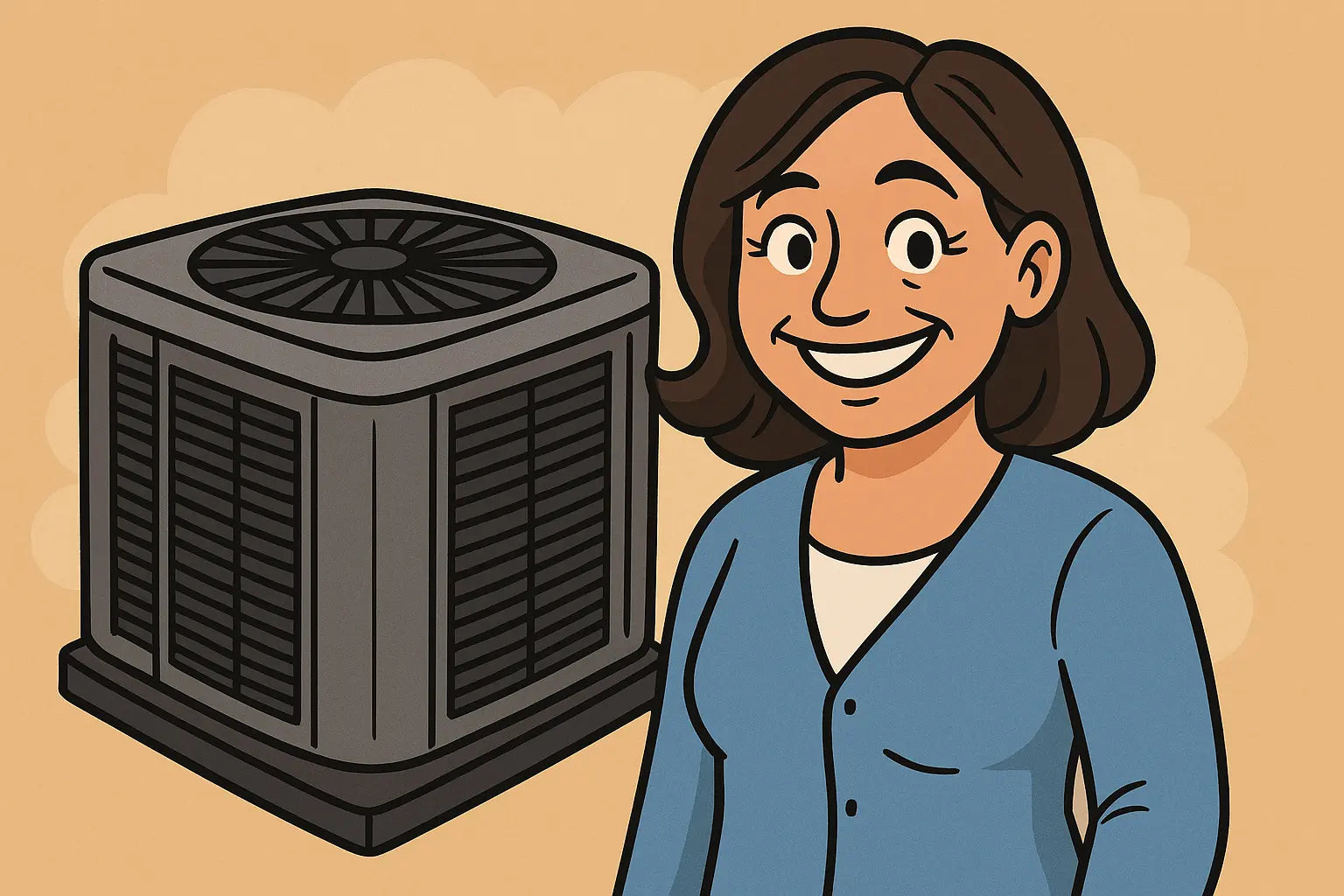🛠️ Hi Friends, Samantha Here...
Let me tell you something from experience—installing a new HVAC system sounds simple... until your utility closet is the size of a pantry and your crawlspace is better suited for raccoons than technicians. But with a little prep and the right system (ahem, the Goodman GLXS4BA3610 paired with the CAPTA3626C3 coil), you can have high-efficiency performance in a compact footprint—without tearing up half your home.
So let’s roll up our sleeves and dive into what makes tight-space installations possible with this setup—and how to avoid common headaches along the way.
Why This System Shines in Small Spaces
The Goodman GLXS4BA3610 condenser is part of their R-32 series, meaning it runs on low-GWP refrigerant that helps reduce your environmental impact. Pair it with the CAPTA3626C3 vertical coil and a 96% AFUE 100,000 BTU natural gas furnace, and you’ve got yourself a powerhouse HVAC system that doesn’t need a warehouse to operate.
Key design perks for compact installs:
-
Vertical coil design saves square footage
-
Quiet operation = no roaring unit in a small hallway
-
Smart airflow engineering with ECM motor keeps efficiency high, even when duct runs are short or awkward
-
The CAPTA coil has a slim profile for tighter air handler closets
This combo is a total game-changer if you’re upgrading in an older home, mobile home, or even retrofitting a multi-family property with shared mechanical closets.
📐 Prepping for the Install: Measure Twice, Vent Once
Clearance is key. You’ll want to refer to Goodman’s installation manual (or ask your contractor) for minimum clearance requirements, especially for airflow around the condenser and furnace cabinet. Typically:
-
24 inches clearance for the condenser coil (don’t block it with a fence or bushes)
-
1 inch on each side of the furnace cabinet (though more is always better)
-
6 inches overhead for maintenance access
If you’re working in a crawlspace or attic install, you might want to reference HVAC School’s duct routing tips to avoid bottlenecks. Trust me, an elbow too close to the coil can reduce airflow and drive your energy bills up before the first season’s over.
🧰 Tips for Tight-Space Retrofits
Problem #1: Limited access to the air handler closet
Fix: Install the vertical coil first, then the furnace, and attach them inside the closet instead of sliding in as a single unit. The Goodman cabinet design helps with modular stacking.
Problem #2: No room for a side return
Fix: Use a bottom return air plenum with a filtered grille. Not only does this save side clearance, but it also makes filter swaps easier.
Problem #3: Gas line clearance
Fix: Make sure your installer routes the gas line behind or under the furnace base if side clearances are tight. Goodman offers gas inlet flexibility on both sides.
Problem #4: Condensate drainage in cramped basements
Fix: Gravity isn’t your friend here. Use a small condensate pump system to lift the water to your nearest drain line.
🧯 Safety & Ventilation: Must-Knows
When working in a confined space, combustion air and venting become safety-critical. This Goodman system uses direct venting, which is great—it pulls combustion air from outside and vents exhaust directly outdoors. That means no backdrafting in tight rooms.
But—you MUST use approved vent pipe (typically PVC or CPVC rated for gas furnace exhaust) and maintain clear separation between intake and exhaust. If you’re close to walls, eaves, or windows, follow IRC venting rules closely.
And here’s a little-known fact: Goodman’s furnace has built-in pressure switches and rollout sensors that will shut down the unit if airflow or combustion is compromised. Peace of mind 💨.
🛎️ Installation Timeline & Pro Checklist
If you’re hiring a contractor, here’s what your install should look like (in condensed form):
-
Day 1 – Prep & Demo: Remove old unit, clear debris, install drain pan and pads if needed
-
Day 2 – Mechanical Work: Furnace set in place, coil stacked, flue vented, gas line connected
-
Day 3 – Electrical & Refrigerant: ECM wiring, thermostat, line set run, R-32 charged
-
Day 4 – Final Checks: Leak testing, pressure check, airflow tuning, startup
You’ll want a contractor who understands tight space installs and can perform Manual J and D calculations. If they gloss over that—run. (And I don’t mean just because there’s no space to walk.)
🔍 Samantha’s Bonus Tips for Low-Access Success
-
Label EVERYTHING. Trust me—if you ever need maintenance down the line, labeled gas valves, drain lines, and control boards will make your tech’s life easier.
-
Consider a smart thermostat with Wi-Fi monitoring. If airflow drops or the unit short-cycles, you’ll get alerts before things get out of hand.
-
Check for rebates on high-efficiency gas furnaces with ECM motors—many utilities offer them, especially in tight-home retrofits. Start with ENERGY STAR’s rebate finder.
-
Ask for a walkthrough post-installation. Have your tech show you where the shutoffs, breakers, and filter are—even if you need to crouch!
💬 Final Thoughts from Samantha
Installing in a tight or hard-to-reach area isn’t for the faint of heart, but the right equipment makes all the difference. The Goodman GLXS4BA3610 and CAPTA3626C3 combo is smart, space-efficient, and powerful—just what you need when square footage is a premium but comfort is non-negotiable.
Want to learn more about this setup? You can check it out right here on The Furnace Outlet. 💙
Dealing with refrigerant leaks? Visit: The Smart Shopper’s Guide to R‑32 Charging & Leak Testing for Your Goodman GLXS4BA3610 & CAPTA3626C3 System.
See you later,
- Samantha, Home Comfort Advisor







